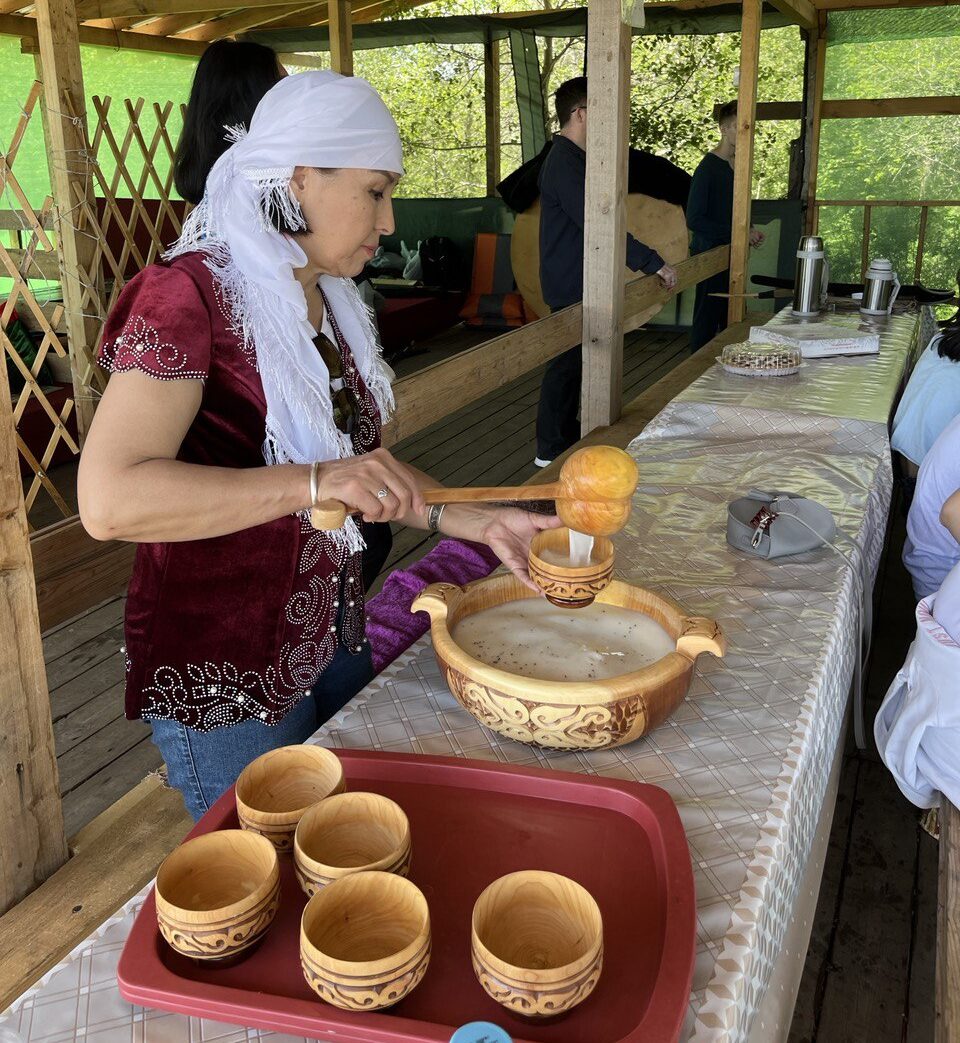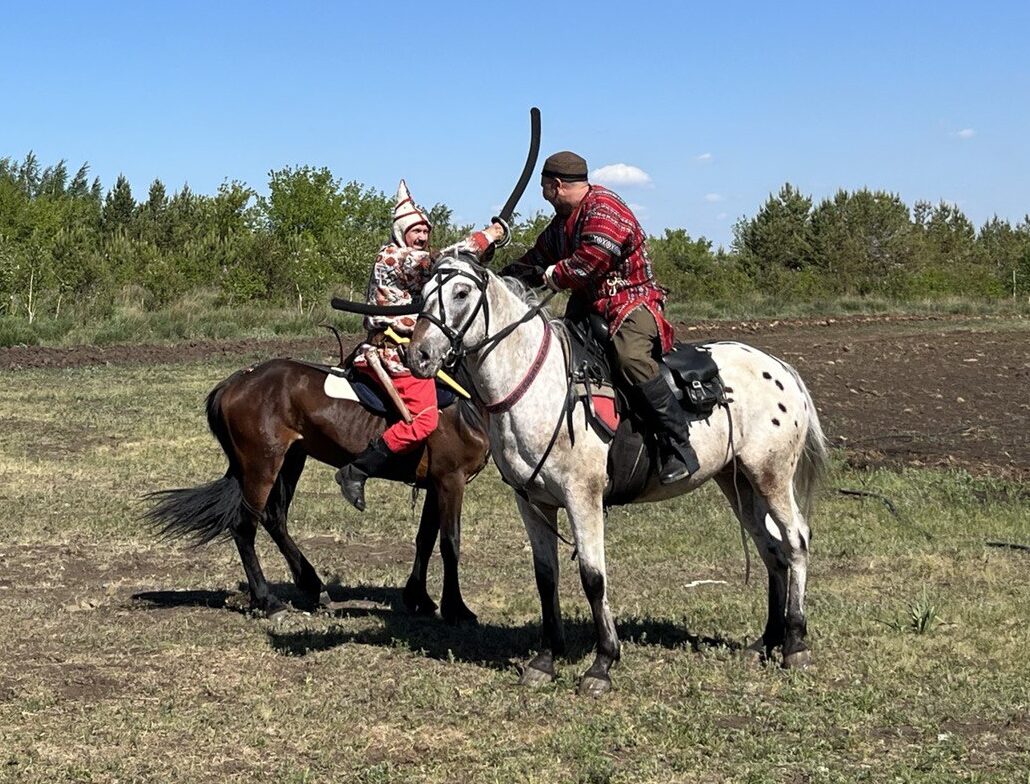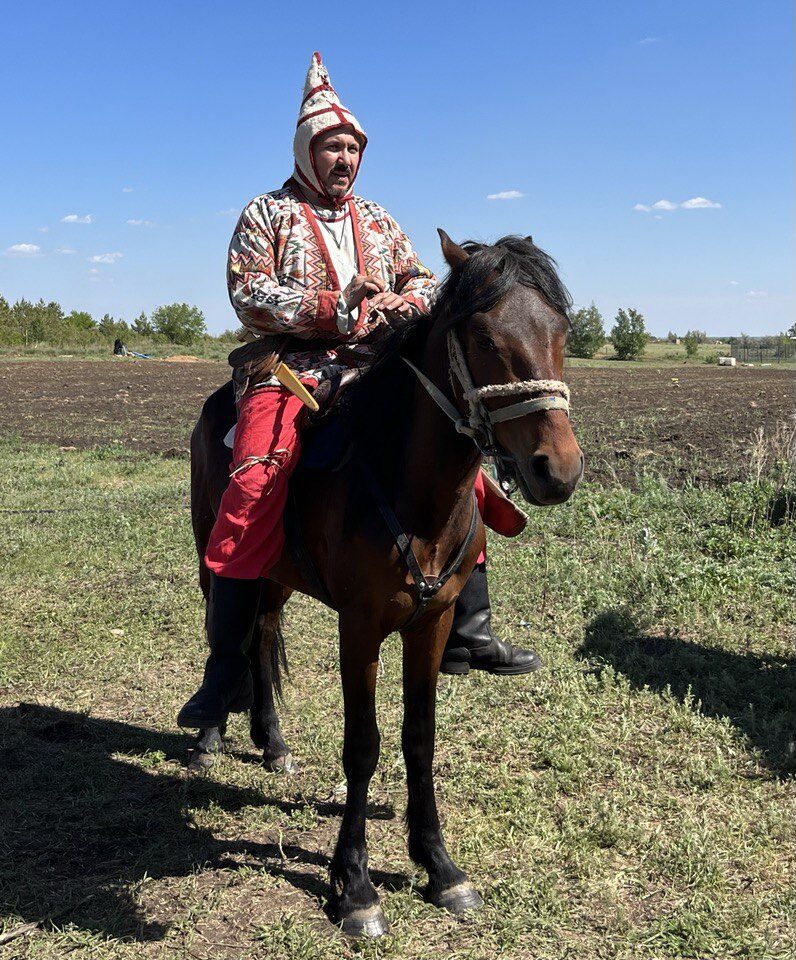NUR-SULTAN – The first Nomad Fest with the participation of a historical reconstructor, which is one of the rarest professions in Kazakhstan, gathered recently an inner circle of approximately 30 people so that they could fully plunge into the ambiance of the nomadic lifestyle in the vicinity of the Kazakh capital.

Baidaralin (L) and Baigozhin (R) demonstrating fighting techniques during the festival. Photo credit: Saniya Bulatkulova. Click to see the map in full size
Compared to local ethnic festivals, where people eat traditional meals, play national games, dance, sing and participate in the craft fair, the event sought to familiarize its guests with details of the life of nomadic Kazakhs that have been forgotten due to colonization and Sovietization.
According to event organizer and Assistant Professor of Anthropology at Nazarbayev University Ulan Bigozhin, he proposed to hold the first independent nomad fest to his friend and colleague Daniyar Baidaralin after he found a kymyzkhana (the place, where people may drink fermented mare’s milk) during one of his horseback walks. They decided to bring together only their colleagues and friends for the first time to see whether people would like such an event.
“I have kept a horse for myself since 2018, so horse riding has become a lifestyle for me. My friends and I do horseback riding to the nearest lakes at an average distance of 20-40 kilometers,” Bigozhin said in an interview with The Astana Times.

One of the owners of local kymyzkhana giving guests kymyz. Photo credit: Saniya Bulatkulova
Baidaralin, who serves as a research fellow of the State Historical and Cultural Museum-Reserve Issyk in the Almaty Region, performed as a speaker during the first part of the event. He gave an exciting lecture about the bes karu (five types of traditional Kazakh weapons) and demonstrated the techniques people used while fighting with that armament.
In addition to his statement about Kazakh national games being a form of preparation for war, Baidaralin talked about his clothing which he sewed himself.
“This is the way Kazakhs living near the Syrdarya River (western and southern Kazakhstan) used to get dressed in approximately 18-19 century,” Baidaralin said at the event.
After a one-hour lunch break, during which guests tasted kymyz made by local dwellers, fest participants observed the process of mare milking and some of them even tried to do it themselves. Following this, Bigozhin and Baidaralin showcased the ways Kazakh people battled and shot bows on horseback.

Baidaralin and Bigozhin demonstrating fight techniques while riding their horses. Photo credit: Saniya Bulatkulova
“I decided to participate in the event as I was very interested in horse riding, particularly in Kazakhstan. Actually I did not know about it before I came to Kazakhstan. And I really like this area. This forest and fields, it is so nice to escape from the city,” said Curtis Merphy, who came from the US to teach history at Nazarbayev University.

Baidaralin wearing clothing of Saka people (Eurasian nomads). Photo credit: Saniya Bulatkulova
Another fest’s guest, Marek Jochec, Professor of Finance at Nazarbayev University and Czech Republic native, said that “he liked this event very much as it was pretty informal and quite enjoyable.”
“I saw for the first time the life of nomads as well as using bow and arrows and shooting a bow from a horse,” Jochec concluded.


